From the Great Wall to the mighty Terracotta Army – China is big on sights and experiences
 As I paused to catch a lungful of air and absorb the equally breath-taking view of the Great Wall of China snaking into the hilly distance the last thing I anticipated was being offered a medal to say I’d walked the wall, along with postcards, flags and other mementos. On reflection, the encounter with the hardy hawker who’d carried her bag of wares up the world’s largest man-made structure encapsulated a country that really is like nowhere else on earth.
As I paused to catch a lungful of air and absorb the equally breath-taking view of the Great Wall of China snaking into the hilly distance the last thing I anticipated was being offered a medal to say I’d walked the wall, along with postcards, flags and other mementos. On reflection, the encounter with the hardy hawker who’d carried her bag of wares up the world’s largest man-made structure encapsulated a country that really is like nowhere else on earth.
Historically inaccessible to the outside world through its natural defenders of mountains, seas and desert – and the ruling dynasties that created the Great Wall to protect the empire – it’s only in recent years that the world’s most populated country has emerged from self-imposed isolation. From the mind-boggling ancient and modern engineering projects of the Great Wall and Shanghai’s neon-lit skyscrapers, to the choice of credit card busting jade carvings or fake Rolex watches for a fiver, along with curious locals asking to take photos with us – the equally inquisitive ‘big nose’ westerners – China is filled with amazing and often contradictory experiences.
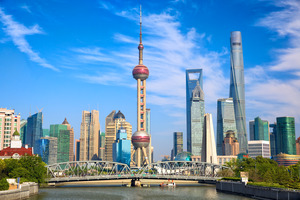 Even the most independent traveller will find the best way to discover this complex and still mysterious country is on a guided tour, and our journey took us from Shanghai to Beijing. The first day included a walk along The Bund, Shanghai’s elegant waterfront mile where Gothic, Art Deco and other historic buildings are overlooked by sleek modern towers on the opposite side of the Huangpu River. That night we returned to see it in a completely different light on a river cruise, where the towering buildings were illuminated in a kaleidoscope of colours.
Even the most independent traveller will find the best way to discover this complex and still mysterious country is on a guided tour, and our journey took us from Shanghai to Beijing. The first day included a walk along The Bund, Shanghai’s elegant waterfront mile where Gothic, Art Deco and other historic buildings are overlooked by sleek modern towers on the opposite side of the Huangpu River. That night we returned to see it in a completely different light on a river cruise, where the towering buildings were illuminated in a kaleidoscope of colours.
Our first meal introduced us to the delights of the Lazy Susan, a fixture, albeit a moveable one, on the Chinese dining scene. Trying to get the hang of chopsticks is part of the fun of eating out, although knives and forks are always available. We also had to learn to pace ourselves, after initially taking large portions from the array of dishes placed on the rotating glass table top. It took a couple of meals to realise the food keeps coming and the end is only nigh with the arrival of a plate of fruit.
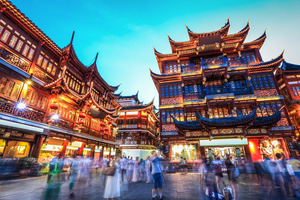 The next stop in Shanghai was the 16th century old town; a world away from the fast-paced modern city we’d seen earlier. The tranquil Yuyuan Garden is a real oasis, with imposing dragon-shaped walls guarding the peaceful haven where ponds are filled with glistening koi carp and turtles, the latter a Chinese symbol of longevity. In the streets outside locals queue for lunchtime dim sum, while cafes serve all manner of Chinese tea; some familiar varieties and others sold as a cure-all, claiming to help anything from digestion to hangovers.
The next stop in Shanghai was the 16th century old town; a world away from the fast-paced modern city we’d seen earlier. The tranquil Yuyuan Garden is a real oasis, with imposing dragon-shaped walls guarding the peaceful haven where ponds are filled with glistening koi carp and turtles, the latter a Chinese symbol of longevity. In the streets outside locals queue for lunchtime dim sum, while cafes serve all manner of Chinese tea; some familiar varieties and others sold as a cure-all, claiming to help anything from digestion to hangovers.
An internal flight the following day took us to Xian, which boasts the most complete city wall to survive in China. More than 40ft high, and as wide in places, it is more than eight miles long and if you’re feeling energetic you can hire a bike to cycle around.
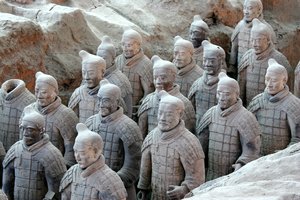 However, Xian’s biggest sight – in every sense – is the Terracotta Army. Located an hour’s drive out of the city, nothing could have prepared me for the sheer majesty of more than 7,000 larger the life-size figures in serried ranks and all with different facial features and characteristics, from young, lean foot soldiers to plump and stately generals. Alongside them are equally noble horses. Meticulously crafted in 210BC on the orders of the first Chinese emperor Qin Shi Huang to protect him in the afterlife, the spectacle is all the more thrilling because the soldiers lay hidden in the vast mausoleum until being discovered by local farmers digging a well in 1974.
However, Xian’s biggest sight – in every sense – is the Terracotta Army. Located an hour’s drive out of the city, nothing could have prepared me for the sheer majesty of more than 7,000 larger the life-size figures in serried ranks and all with different facial features and characteristics, from young, lean foot soldiers to plump and stately generals. Alongside them are equally noble horses. Meticulously crafted in 210BC on the orders of the first Chinese emperor Qin Shi Huang to protect him in the afterlife, the spectacle is all the more thrilling because the soldiers lay hidden in the vast mausoleum until being discovered by local farmers digging a well in 1974.
Accompanying us every step of the way on the tour was George, our indefatigable tour guide who dispensed a wealth of information and humour in equal measure. Chinese v Western toilets became something of a standing joke, if you’ll pardon the pun, and one day we were relieved to find five-star toilets certified by the tourist board!
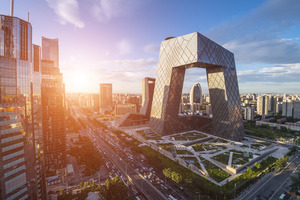 Each day brought another highlight, and from Xian we took a sleek bullet train to Beijing which is the gateway to the Great Wall of China. Many tours head to the Badaling section, which is closest to the city but can get very busy. Our 43-mile drive to the Mutianyu stretch, accessed by cable car, was rewarded with an uncrowded walk between some of the watch towers. Free time on the wall allows serious hikers to ascend some of the challenging steps, while others can simply relax over a drink at the panoramic viewing point.
Each day brought another highlight, and from Xian we took a sleek bullet train to Beijing which is the gateway to the Great Wall of China. Many tours head to the Badaling section, which is closest to the city but can get very busy. Our 43-mile drive to the Mutianyu stretch, accessed by cable car, was rewarded with an uncrowded walk between some of the watch towers. Free time on the wall allows serious hikers to ascend some of the challenging steps, while others can simply relax over a drink at the panoramic viewing point.
Culture-rich excursions, which included a dazzling acrobatic show, were interspersed with plenty of shopping opportunities, be it haggling for inexpensive souvenirs in Beijing’s three-floor Pearl Market or having the opportunity to buy painstakingly crafted carpets, silk paintings and exquisite jade from specialist workshops which included a short tour and insightful talk.
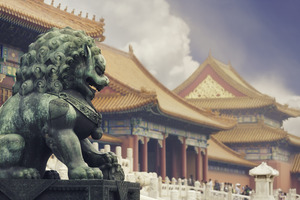 Our journey culminated with a stroll around the vast expanse of Tiananmen Square, the largest in the world, and the enigma of Beijing’s adjoining Forbidden City that was closed to the outside world for five centuries.
Our journey culminated with a stroll around the vast expanse of Tiananmen Square, the largest in the world, and the enigma of Beijing’s adjoining Forbidden City that was closed to the outside world for five centuries.
By the time we reached our last hotel in Beijing, dodging a fair few of singer Katie Melua’s alleged nine million bicycles as we crossed the road, we knew how to tell real jade from fake, a potted history of the Chinese dynasties, that Peking duck is carved into 120 precise pieces, and that you can’t really see the Great Wall from space. Above all we had memories that would last far longer than even the lengthiest Lazy Susan meal.
More information
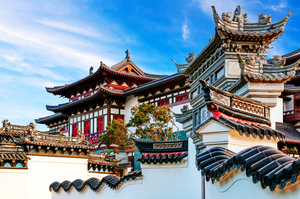 Cosmos offers a variety of escorted touring holidays from 11 to15 days with the option to include a Yangtze River cruise. The 11-day itinerary ‘A China Experience’, taking in the Great Wall of China, Terracotta Warriors, Beijing and Shanghai is priced from £1,599, including flights, full-board accommodation, guided sightseeing, transfers and private home pick-up service.
Cosmos offers a variety of escorted touring holidays from 11 to15 days with the option to include a Yangtze River cruise. The 11-day itinerary ‘A China Experience’, taking in the Great Wall of China, Terracotta Warriors, Beijing and Shanghai is priced from £1,599, including flights, full-board accommodation, guided sightseeing, transfers and private home pick-up service.
Silver Travel Advisor recommends Cosmos Tours and Cruises
Photographs courtesy of Cosmos











